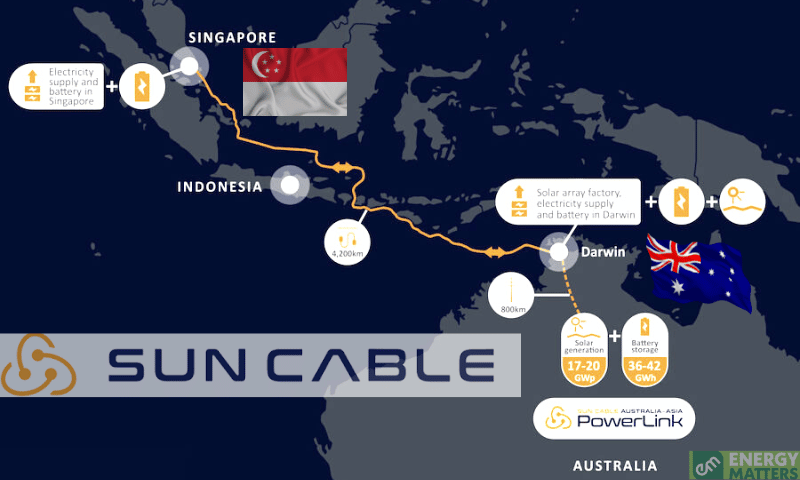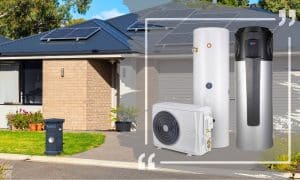The Sun Cable project, a proposed solar farm in Australia’s Northern Territory, has recently come under scrutiny for its feasibility and economic viability. The project, which aims to generate 20 gigawatts of electricity and export it to Singapore via Indonesian water 4,200-kilometer-long undersea cable, has been touted as a breakthrough in renewable energy. However, recent developments have raised questions about the feasibility of such mega and ambitious projects.
Viable or not viable
According to renewable energy consultant and former investment banker David Leitch, the Australia-Asia Power Link proposal by Sun Cable was viable. Still, its scope was unmatched anyplace in the world.
Importantly, he stressed that the subsea cable was probably going to be its biggest obstacle, noting that it was more than five times longer than the longest cable in the world, the 767-kilometer Viking link between the UK and Denmark that is now being built.
“It’s not the technical issues that worry me so much, but the fact it ties up a lot of the world’s cable manufacturing industry,” Mr Leitch said.
Energy Matters has been a leader in the renewable energy industry since 2005. Contact us and discuss and choose the best quote that suits your needs and budget. We can connect you with our trusted local solar installers in Melbourne, who will provide up to 3 FREE quotes for your home and business solar energy system.
Mr Forrest confirmed his support for a “game-changing solar and battery” project in the Northern Territory through John Hartman, the chairman of his private energy company Squadron.
Mr Hartman asserted that Sun Cable was “not commercially viable” in its present form, and he recommended that it would be more appropriate to use the initiative to create ammonia or green hydrogen.
“As Australia’s largest renewable energy company, Squadron Energy is best placed to help Australia become a green energy exporting superpower by generating renewable energy to produce green hydrogen and green ammonia,” Hartman said.
The Sun Cable project anticipated that the extremely long extension cord between Australia and Singapore would be difficult to construct and worrisomely weak. Bevan Slattery, an Australian businessman, founder and CEO of SODA, who has operated companies that construct and manage underwater data cables, provided the evaluation.
The path from Australia to Singapore passes through deep water, oil pipelines, multiple telecoms cables, and some of the most hazardous waters in the world for those cables, according to a lengthy LinkedIn post by Slattery. He believed new ships would be required to construct and maintain the cable.
Cables break all the time, and he also evaluated the cable as “unrecoverable” if it was damaged. Due to the nearly continual geological action along its route, this one would have a higher than average potential of breaking.
Despite the recent “billionaire bust-up” and the significant delays and challenges that the Sun Cable project has faced, the Australian Minister for Energy, Josh Bowen, remains upbeat and excited about the project. He believes the project is still moving forward, and the government is committed to completing it. The project has the potential to create thousands of jobs and generate significant economic benefits for the region and the country as a whole.
Visit our page to learn more about ministers’ confidence despite Sun Cable Project’s failure.
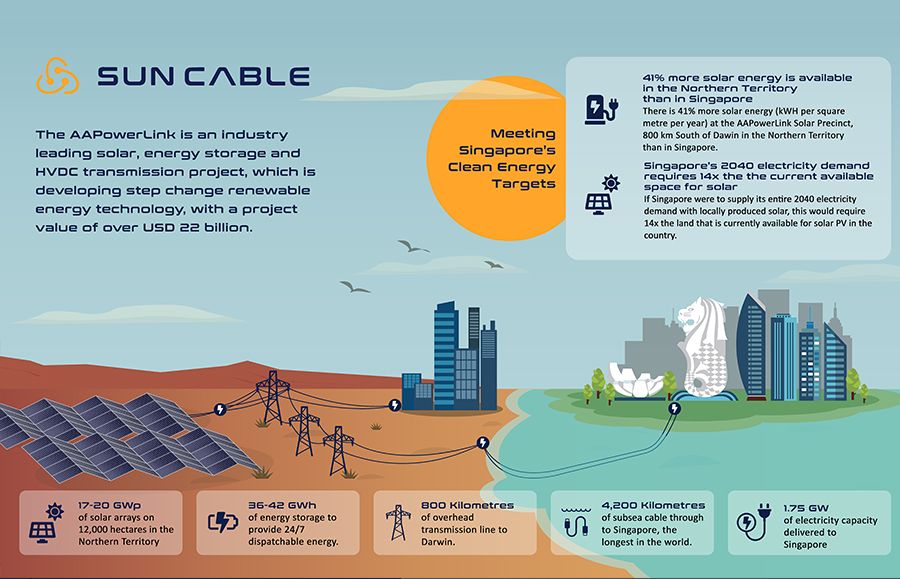 Image: SMEC
Image: SMEC
Voluntary administration
The Australian billionaire entrepreneurs Mike Cannon-Brookes and Andrew Forrest’s Sun Cable was put into voluntary administration last week following a disagreement between the two on the necessity of investing more money in the project.
Check out our page to learn about Suncable’s difficult decision to enter voluntary administration.
Up for sale to settle Sun Cable's future
The project’s cost is so high due to the project’s scale and the undersea cable’s cost. Additionally, the project’s location in the Northern Territory means it would have to overcome significant logistical challenges, such as the remote location and the harsh environmental conditions.
With the administrators saying they hope to get the company sold or recapitalised by the end of April, the destiny of Sun Cable’s anticipated $30 billion-plus (USD 20.7 billion) Australia-Asia PowerLink project could be decided in less than three months.
The initiative has the support of Cannon-Brookes, a tech tycoon and chairman of Sun Cable. The undersea cable idea was intended to be abandoned, but iron ore billionaire Forrest’s private company Squadron Energy lobbied for a rethink of the project.
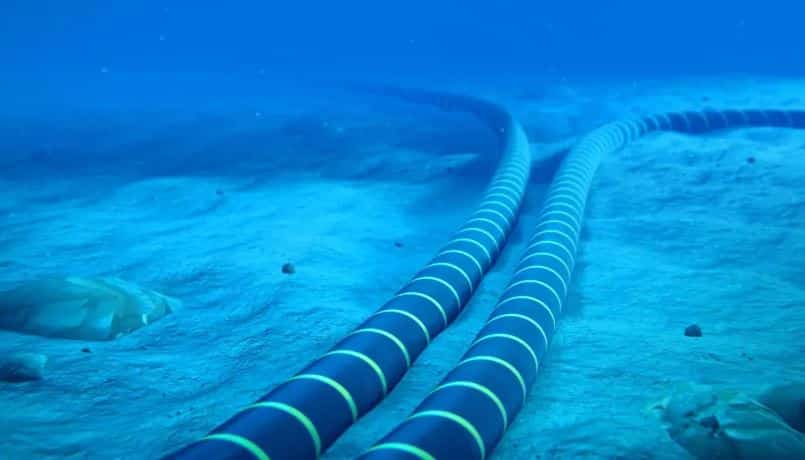 Image: Sun Cable – The AAPowerlink project would use a 4,200 km underwater cable to export sustainable energy from Australia to Singapore.
Image: Sun Cable – The AAPowerlink project would use a 4,200 km underwater cable to export sustainable energy from Australia to Singapore.
Both sides are anticipated to offer bids for the business.
Forrest stated that he would not object if Cannon-Brookes successfully acquired Sun Cable in an interview with the Australian Financial Review at the World Economic Summit in Davos, Switzerland.
Forrest expressed alarm about the project’s rising costs, which had increased to A$35 billion ($24 billion), and said that if he acquired the company, he would not proceed with the cable element of the project.
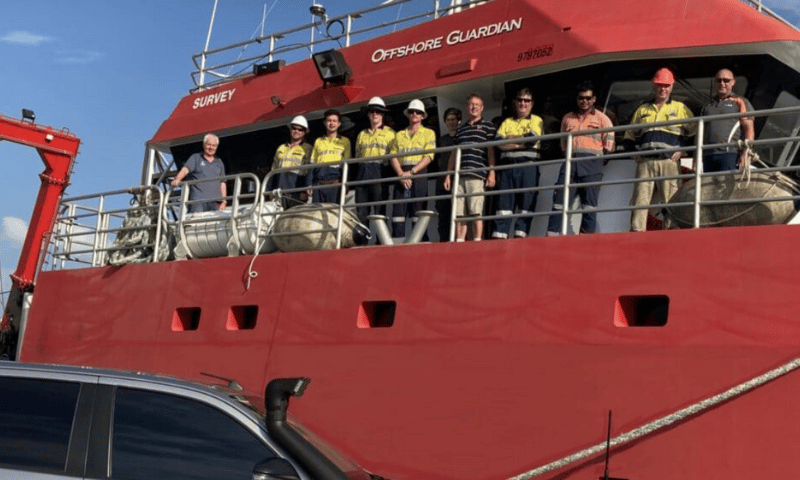 Image: Sun Cable – Guardian Offshore is a marine contractor providing boats to the oil and gas industry. Extensive marine knowledge and ports in Perth and Darwin.
Image: Sun Cable – Guardian Offshore is a marine contractor providing boats to the oil and gas industry. Extensive marine knowledge and ports in Perth and Darwin.
The high cost of the project and the logistical and economic challenges it faces make it questionable if such projects are viable solutions to meet the world’s energy needs. While renewable energy is an important part of the solution to addressing climate change, it is important to consider the feasibility and long-term viability of projects before committing to them.
Energy Matters’ “Energy Health Check” is a cutting-edge energy comparator tool that allows you to compare the most competitive retail offers in your area. We collect the data from our wide range of trusted retailers, allowing you to decide about changing your plan.











